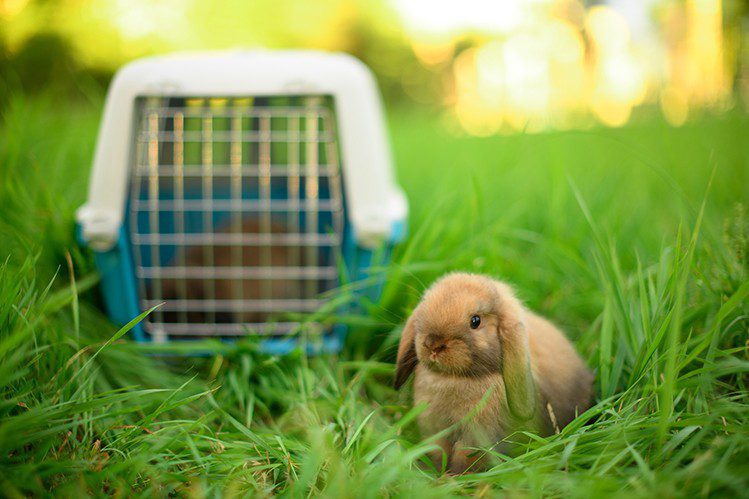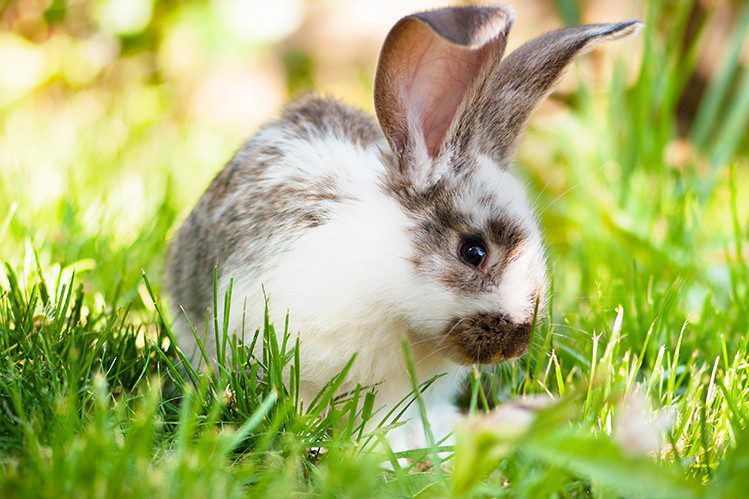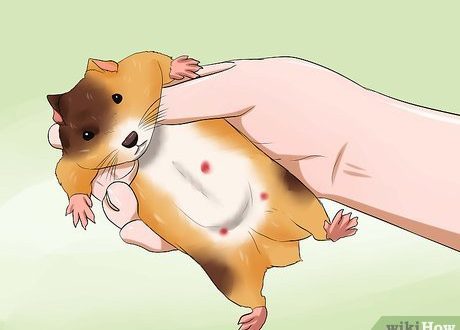
Tare da zomo zuwa ƙasar: Dokokin 10 don tafiya mai lafiya
10 main rules, thanks to which a trip to the dacha with an eared one will be pleasant for both you and him.
With the advent of spring, many of us begin to spend more time in nature, outside the city, in the country. This is a great occasion to arrange an exciting journey for your eared pet and give him positive emotions under the warm sun and on green grass.
So that the trip does not turn into a continuous stress for the pet, you need to take care of the rabbit’s safe walk, its comfort in transport and other nuances. It is important to foresee all negative scenarios and prevent them.
We have identified the 10 most important rules, thanks to which a trip to the dacha with an eared one will be pleasant for both you and him.
This is the first thing to worry about. Walking a rabbit is possible only after vaccination, without this, going outside in the warm season can threaten the pet with death.
It is necessary to vaccinate the rabbit against myxomatosis and viral hemorrhagic disease of rabbits (RGBD). The first occurs most often in spring and summer, when blood-sucking insects are activated. It is they who act as carriers of myxomatosis, from which unvaccinated animals die. VGBK pet can become infected through equipment, food, humans, animals and, again, blood-sucking insects.
Given that there are a lot of various insects outside the city in spring and summer, you need to take care of the rabbit in advance and give him the necessary vaccines before the trip.
The first vaccination is done against VGBK, after 90 days they put the second component. 2 weeks later, they are vaccinated against myxomatosis. The second injection from this disease is given after 3 months. You can put a complex vaccine. Revaccinate your pet for the rest of his life.
It is better to vaccinate in such a way that by the time the rabbit goes out into nature, the rabbit has protection against both diseases.
Rabbits are very shy and sensitive creatures, because they are victims by nature. In a cozy quiet house, nothing threatens them, and over time they get used to all extraneous sounds. But when the baby is on the street, there are waiting for him not only other sounds, but also a huge number of new smells. The rabbit may not be able to handle so much information, panic and get stressed.
To minimize negative reactions, rabbits need to be gradually accustomed to the outside world. For example, take a pet to the balcony, holding it in your arms or in a carrier. You can go outside with the rabbit for a while and sit on a bench near the entrance. But the pet must be protected. It will be better if he is in a carrier – so he does not jump out and run away.
Some owners walk their eared with a harness, but it’s better not to do this. A rabbit moves differently than a dog or cat – by jumping. The skeleton of rabbits is very fragile. If the animal jumps sharply or gives a tear from fright, the harness will hold it, but it can injure.
Therefore, if your bunny is still a coward, give preference to a carrier rather than a harness. In addition, walking a rabbit can have a detrimental effect on a gentle animal: a dog or cat can run up to it, an eared one will pick up something dirty on the street, injure fragile paws – you can list for a long time.
A rabbit in a car or other vehicle should feel as calm as possible.
In the heat to get a heatstroke in transport – just spit. Especially if the road is not close.
A personal car will provide a pet and you much more comfort. But even in the car it can be very hot. It is not recommended to open the windows – the rabbit can easily blow through, and he will catch a cold. Air conditioning – only at low speeds so that the animal does not freeze.
When the temperature is high outside, be sure to ensure that your ward is provided with water. The water in the bowl can spill, so it is better to purchase a special drinker. If the road is long, you can make a stop to rest yourself and give the rabbit fresh, clean water to drink.
During the trip, the carrier will serve as a temporary home for the rabbit. It must be made safe and as convenient as possible.
First, the carrier must be the right size. It is important that the pet has the opportunity to lie down in the carrier so that the paws are extended.

Secondly, there should be enough ventilation holes in the carrier so that the pet can breathe comfortably.
Thirdly, the bottom of the carrier must be made non-slippery. The rabbit should not ride on it, as if on ice, from any sudden traffic. You can put a lint-free mat or absorbent diaper on the bottom (but they need to be well attached so that they do not roll down).
It is advisable that someone ride next to the rabbit in the back seat and make sure that everything is fine with the baby.
Dwarf rabbits can easily tolerate temperatures from +10℃ to +20℃. Decorative and large rabbits are more “hardened”: they can’t even care about 0℃, the maximum temperature is +20℃.
As you can see, in the spring, rabbits will feel good on the street, but the summer heat is absolutely not for them.
In the warm season, you need to drink plenty of fluids. Place a bowl of clean water in the rabbit’s enclosure. It should not be icy, but refreshing. It is better to put water in the shade, because. from the sun’s rays, it will heat up very quickly.
So, you have arrived at the place and are ready to enjoy the sun and relaxation. Do not hurry. First you need to take care of the safety of your eared friend.
If you want to let him out for a walk and run on the grass, be sure to build a fenced area. Otherwise, you will not have time to blink an eye, as the rabbit will give a tear far, far away.
Usually, the owners set up rabbit aviaries, consisting of two zones: a walking area and a rest area (a house where you can hide). Be sure to provide a shady area for the animal, where he can go to hide from the sun’s rays. Even in spring, when it is still not so hot, the rabbit must certainly have a shelter, because he can be frightened by a sharp sound and hide
Aviary – only strong and durable. Eliminate the possibility of escape: the rabbit can easily dig under the net and crawl out. Dig the walls to a depth of at least 30-50 centimeters. The distances between the gratings or rods should be small so that the rabbit does not crawl between them.
The walls of the enclosure themselves must be made high enough, at least 1 meter, because rabbits are very jumpy.
If you want to please your pet with a green lawn, make sure that greens that are poisonous to a rabbit do not grow on it: celandine, bulbous plants, aloe, begonia, green onions.
Eared ones will gladly eat wheatgrass, dandelion, clover, goutweed, plantain, parsley, dill, basil.

The main condition is that the grass is absolutely clean and not dusty. People and animals should not walk on it, cars should not drive. Before setting up an aviary in the selected area, inspect very carefully if there are any dangerous grasses, broken glass, nails, etc. in this area.
Not sure about the safety of the place? Then equip the bottom for the aviary, along which the rabbit will run. It can be treated wood or carpet. But do not forget to provide your pet with clean and safe weed, tasty vegetables and fruits. And, of course, lots of green alpine hay.
Before you blink your eyes, a bird of prey will notice your pet. Preventing a tragedy is easy – make a mesh roof over the aviary. This will protect the eared not only from birds, but also from curious neighbor cats and dogs that may inadvertently wander into the site.
Never leave your rabbit unattended. Let it always be in your sight, even if you have foreseen all the nuances and provided your pet with complete safety.
If you went on a trip with a rabbit, the first aid kit should also go with you. The rabbit may need a wound healing ointment, a sterile bandage and wipes, disinfectants (chlorhexidine), sorbents (for indigestion or food allergies), antiparasitic drugs (for fleas and ticks), agreed with a ratologist, a sedative based on natural ingredients, selected according to the recommendation a doctor, etc. It is better to coordinate the complete set of a veterinary kit with a veterinarian in advance.
We hope that our advice will be useful, and a holiday outside the city will bring you and your rabbit only positive emotions!





